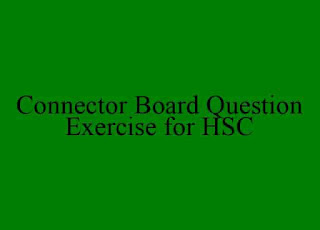The Shield of Achilles Summary and Analysis by W. H. Auden
The Shield of Achilles poem analysis
The Shield of Achilles was first published in Poetry, October 1952 and later included in the volume of poems entitled, The Shield of Achilles and the Collected Shorter Poems in 1955. Thus, it is a very late poem in Auden's career.
The Shield of Achilles is a lyric divided into three parts, and each part consists of three stanzas. The opening stanzas are shorter in length and an incantatory with frequent Homeric echoes. The later stanzas have longer lines and are written in lambie Pentametre. They lack the lyrical and sing-song quality of the initial stanzas.
In the last part of the lyric, Auden employs a different technique where only the second stanza is in lambie Pentametre and other two are incantatory and have a lilting effect.
This lyric employs the classical myth of Achilles and his shield to bring out the contrast between the heroic past and the unheroic present. This mythical technique was popularised by T.S. Eliot to make his comment on the modern condition of desolation. The use of myth enables the poet to juxtapose the past with the present, where the past serves as a comment on the present.
Auden's handling of the myth is dexterous and highly appropriate in underlying the desolation, cruelty and barrenness of the contemporary society. According to Monroe K. Spears Auden's version is however mock-heroic.. the shield symbolizes art, the image of the human condition.
The Shield of Achilles Summary
Thetis, the mother of Achilles, the warrior of classical antiquity, looks at the shield hung on her son's shoulder. This shield, made by Hephaestus, the blacksmith of the gods, had scenes of adventure, art, seafaring men, beautiful orchards and well-governed cities with marble statues and calm seas, whereas the scenes depicted on the shield are those of the contemporary wasteland filled with a multitude of soldiers, waiting inactively for their general's command in a dry voice devoid of all passion.
They are all ‘hollow men', with no passions or feelings. Their leaders have no personal contact with them. They speak in dry voices over the radio, proving by statistics that their cause is just and so persuade them to fight the battle which is re to kill them.
In the second part of the poem, it is the religious decay and desolation in the modern world that is the target of the comment. On the Homeric shield were carved scenes of pious rituals and wine and food being Grecian Urn of Keats. But on the modern shield instead of ‘white flower garlanded heifers’ are carved big concentration camps which are a living picture of death and brutality.
It is a travestied reproduction of the scene of crucifixion and conveys the futility of violence in the modern world. In the past, the violence in the crucifixion of Christ was necessary for the redemption of mankind.
It was martyrdom but the ruthless killings in the modern age carry no significance. The modern waste landers are spiritless who are ill-treated and massacred like dumb driven cattle. But finds a “weed-choked field” where a “ragiged urchin” loiters about, where girls are raped and violence is committed aimlessly. On the contrary, the modern shield is devoid of dancing floors or playgrounds. The fields one can spot are sterile and weed-choked where there can be no growth or regeneration.
The sportsmen are replaced by truants callously throwing stones at birds or quarrelling among themselves and holding knives at each other. Life is brutal and beastly, violence is soulless and there is total lack of heroism. Thetis is so terrified by the contemporary scene that she s away full of despair.
The last stanzas stress the inevitability of the death of Achilles himself. It seems that Auden is here implying that forging such a shield for Achilles by Haphaestos was unnecessary in view of the inevitability of death even though the person may be as valiant a warrior as Achilles.
The conclusion of the poem resounds with religious implications. The gods themselves seem to be dismayed like Thetis. There is a suggestion of fatalism and providential doom. The old order must die and give way to a new order enabling history to complete its circle.
Thus, with a rare simplicity, Auden compresses two worlds far apart in time and outlook in the cosmos of his poem. In order that the parallelism may be effective, Auden alternates the reminiscences of the glorious past of the classical world with the dismal contemporary scene which produces an antithetical and negative effect.
Thetis, the mother of Achilles, in Greek mythology, looks at the shield which is hung over her son’s shoulder. The shield of Achilles was made by Hephaestus, the blacksmith of the gods. On the shield, the artist had carved beautiful scenes of orchards and olive trees, well-governed cities with marble statues and untamed seas with ships sailing on them.
Also there are scenes which depict the artificial and desolate life of the contemporary wasteland. It shows a picture of vast plain which is bleak and barren. There is nothing to eat and no place for rest and shelter. This is the modern wasteland.
This land is full of crowds who are like dumb-driven cattle. They are unable to think for themselves and mechanically carry out the orders of their rulers. These men and hollow within. Their leaders have lost all personal contacts with them. They speak to them over the radio and persuade them to go to war by giving statistics to them. They are sure to be killed in the war.
In the second part of the poem the religious decay and desolation have been commented upon. Like the Grecian Urn of Keats, scenes of religious ritual, showing cows decorated with flowers and wine and food being served on some ceremony are carved on the Homeric shield. Also the pictures of big concentration camps where the pale prisoners of war were kept and shot dead are also carved on it. Also there was much cruelty in the past.
Christ was crucified but the crucification was necessary for the regeneration and redemption of mankind. It was martyrdom. But the mass-killing in the modern age is of no such significance. It simply reflects spiritual degeneration of the modern world.
In the third para, the pictures of athletes busy in their games are shown. Also pictures of men and women dancing rhythmically and sweetly are shown. On the other hand, no pictures of dancing floors or playgrounds are shown. Only ‘weed-choked’ fields are shown. No sportsman but only ‘ragged urchins’ who throw stones at birds are shown on the shield.
It also depicts the girls being raped or boys quarrelling among themselves and killing each other. It depicts a brutal and beastly life. Such a life is devoid of sympathy, love and friendship. Life in the past was not like this.
War and violence have always been there, but violence in the past was not as brutal as it is today. In the past there were brave warriors like Achilles who fought for their religion, their country or for their beloveds. Today there are ‘ragged urchins’ only. And there is senseless violence. The modern scene terrifies Thetis and the poem ends as she goes away crying in dismay.




